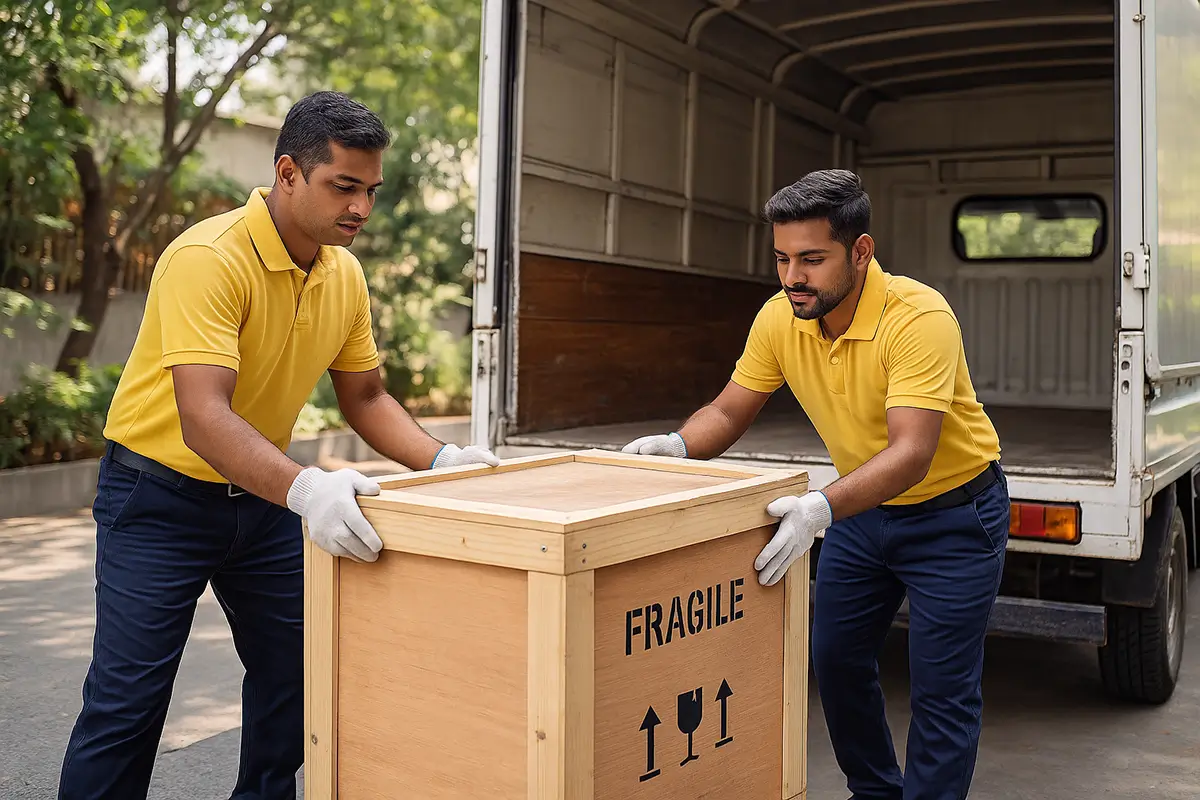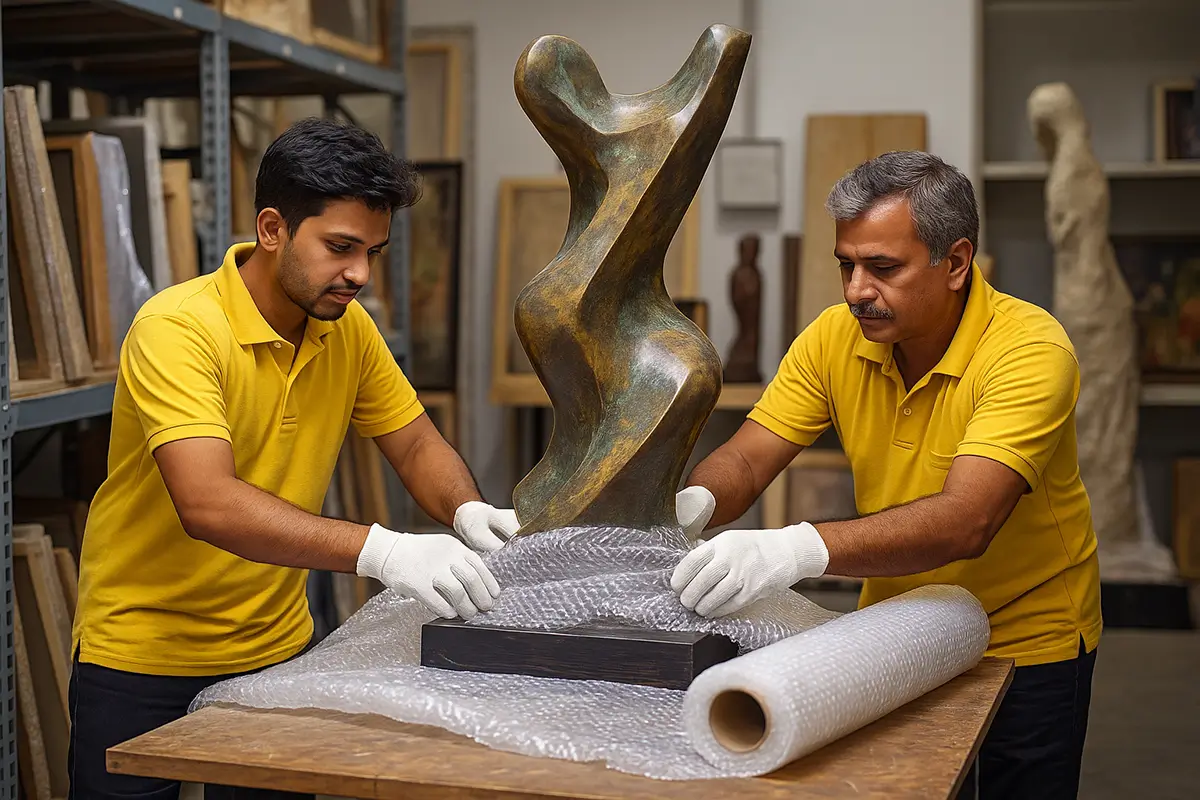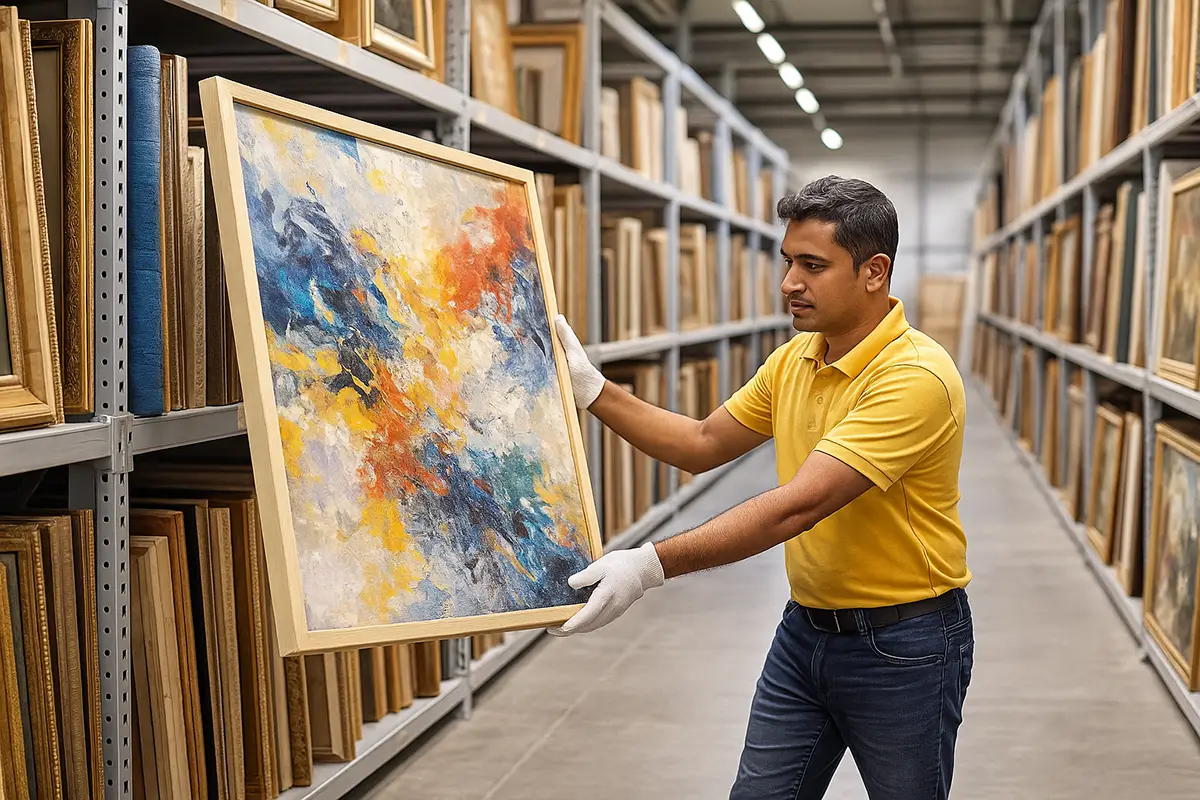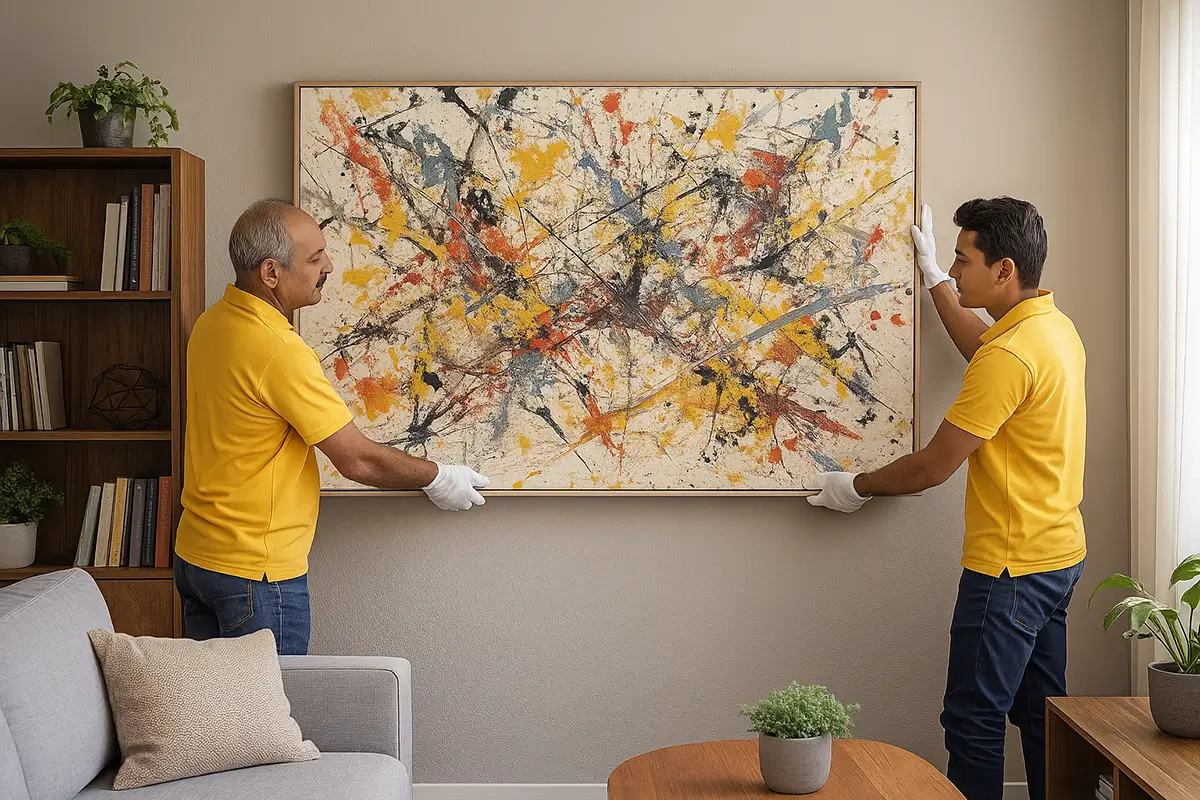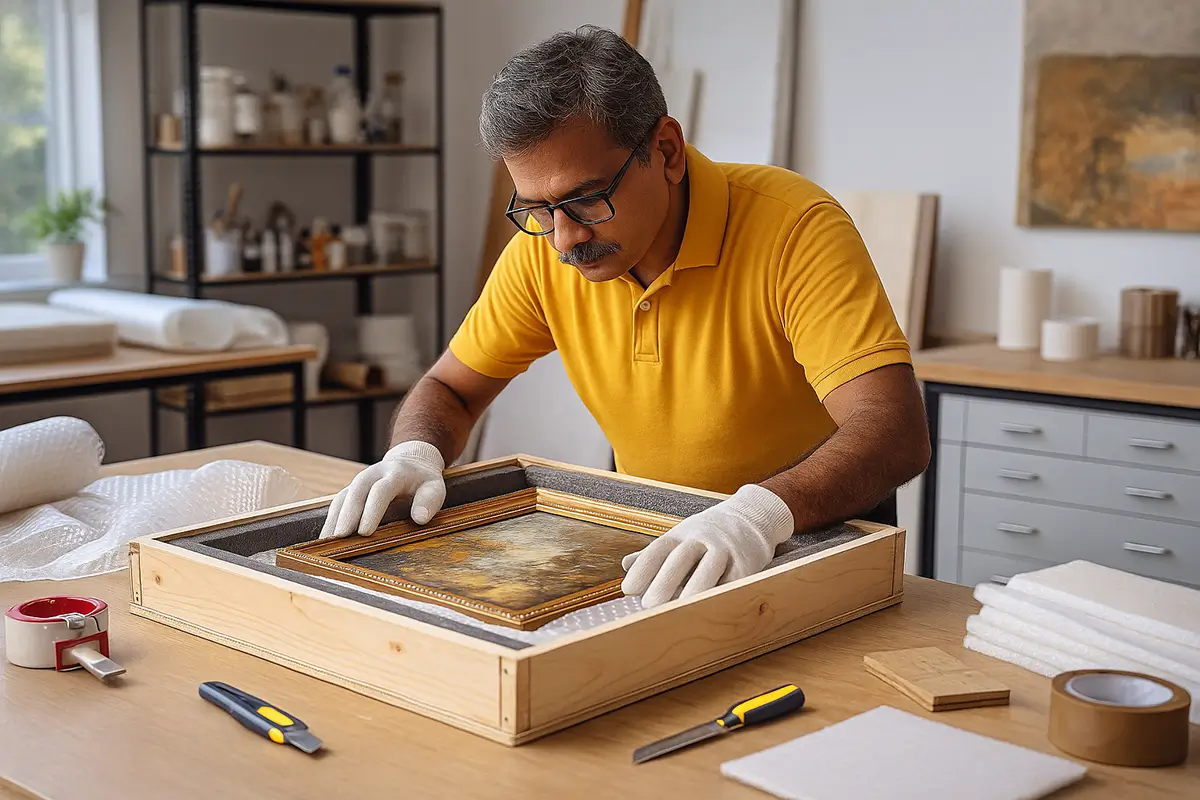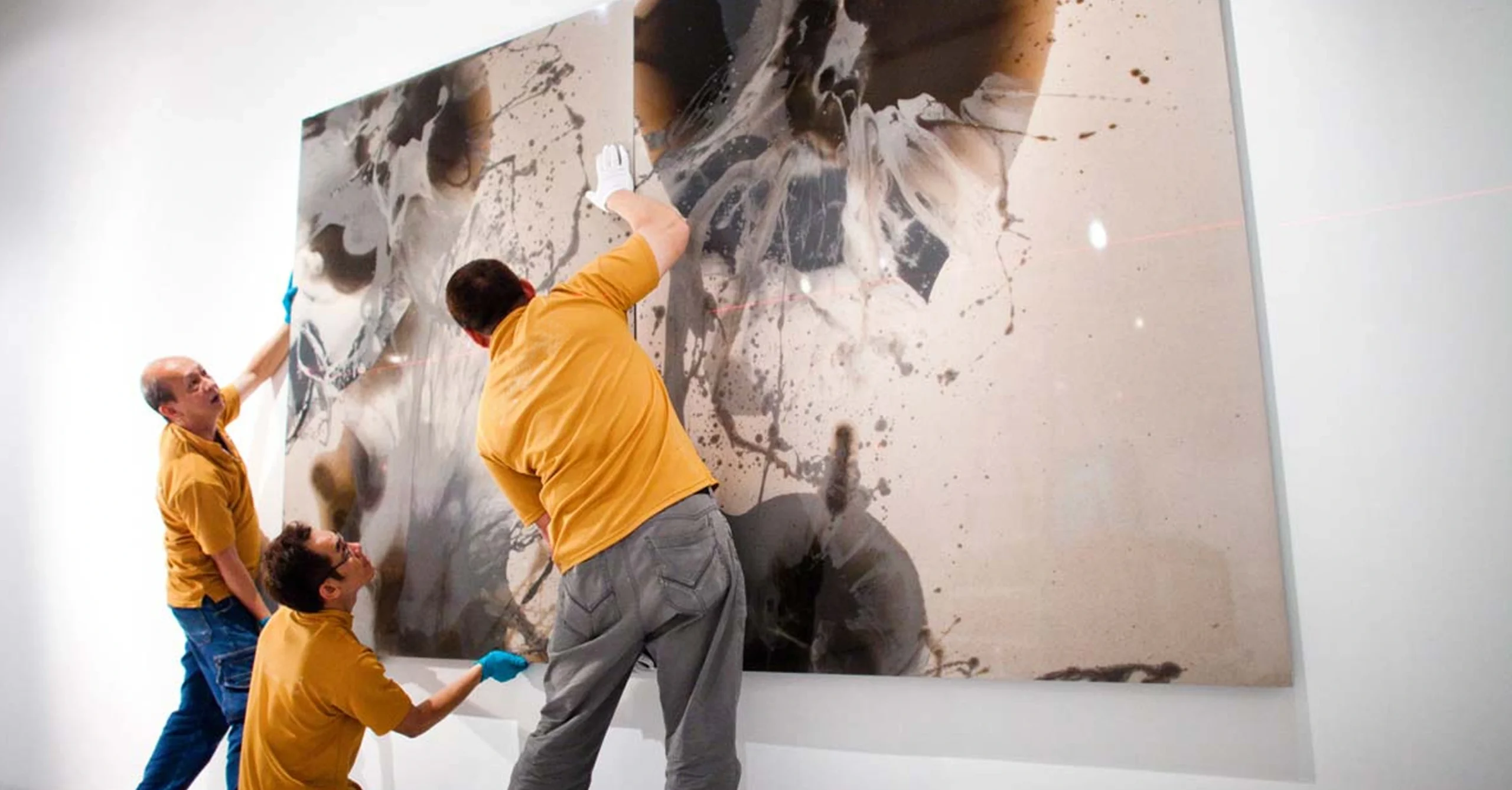Introduction: More than just moving art
When most people think of transporting artworks, they picture wooden crates, bubble wrap, and padded vans. But what often goes unnoticed is the invisible environment inside those crates and vehicles—temperature, humidity, and air quality. These conditions can be the difference between a painting arriving in pristine condition or warped, cracked, or mould-infested.
In India, where summers can reach 45°C, monsoons bring 90% humidity, and winters create sharp swings in climate, climate control is not a luxury—it is a necessity.
This article explores why climate control is so critical in art transport, the unique risks in India, the technologies used, and the best practices collectors, galleries, and institutions must adopt.
Why artworks need controlled environments
Artworks are more fragile than they appear. Materials such as canvas, paper, wood, and pigments react sensitively to environmental changes.
- Heat can cause paint layers to expand and contract, leading to cracks.
- Humidity can warp paper, stretch textiles, and cause mould growth.
- Cold/dry air can make surfaces brittle.
- Dust and pollutants can settle into cracks or degrade pigments.
In short, even if a painting is securely packed, it can be damaged from the inside out without climate control.
The Indian climate challenge
1. Heat extremes
From Delhi’s 45°C summers to Chennai’s scorching humidity, artworks in transit face significant risks of thermal stress.
2. Humidity fluctuations
Monsoons bring sudden spikes in humidity, which can lead to condensation inside crates and vehicles.
3. Dust and pollution
Urban centres like Mumbai and Delhi expose works to high particulate matter, risking surface damage.
4. Long transit times
In a vast country like India, road journeys between cities often span hundreds of kilometres, exposing works to varying climates in a single trip.
Example: A painting shipped from Jaipur to Kochi will face desert heat, central India’s humidity, and coastal dampness—all within one journey.
Climate-sensitive materials
Some art forms are especially vulnerable:
- Paintings on canvas: Cracking, flaking, and warping with temperature changes.
- Works on paper: Buckling, mould, and foxing under humidity.
- Wooden sculptures: Expansion/contraction leading to splits.
- Metal works: Risk of corrosion in high humidity.
- Textiles: Weaving can loosen, dyes can bleed.
These risks make temperature and humidity control essential at every stage of transport.
Technologies for climate control in art logistics
1. Climate-controlled vehicles
- Vans fitted with HVAC (heating, ventilation, and air conditioning) systems.
- Maintain consistent temperature (18–24°C) and humidity (45–55%).
- Air-ride suspension to minimise vibrations.
2. Microclimate packing
- Crates with built-in insulation, vapour barriers, and silica gel packets.
- Ensure stability inside crates even if external climate changes.
3. Data loggers and sensors
- Devices placed inside crates or vehicles to record temperature and humidity.
- Provide accountability and transparency for clients and insurers.
4. Cold chain logistics adaptation
Borrowing from pharmaceutical transport, cold chain systems are increasingly used for art shipments requiring extreme precision.
Best practices for climate-controlled art transport
Pre-transport planning
- Conduct a condition report to identify climate vulnerabilities.
- Choose appropriate packing materials (acid-free, moisture-resistant).
- Schedule transport during cooler times of day if possible.
Packing protocols
- Use vapour barriers to avoid condensation.
- Place silica gel or activated clay inside crates.
- Double-crating for extremely valuable or sensitive works.
During transit
- Monitor with data loggers and adjust settings as required.
- Avoid long storage in non-climate-controlled environments.
- Use sealed vehicles with backup generators for power continuity.
At destination
- Allow artworks to acclimatise gradually before unpacking.
- Document condition upon arrival to ensure no climate-related deterioration.
Risks of ignoring climate control
Case 1: Watercolours in Chennai
A gallery shipped watercolours without humidity control during the monsoon. The works arrived with buckled paper and faint mould spots, requiring costly restoration.
Case 2: Oil paintings in Delhi
A corporate transported paintings in summer without climate-controlled vans. Extreme heat caused cracking in paint layers, diminishing both aesthetic and market value.
Case 3: Photography in Kolkata
Photographic prints warped due to high humidity during transit, losing their professional finish.
Lesson: The cost of climate control is far lower than the cost of restoration—or permanent loss.
The role of valuation in climate-sensitive logistics
Valuation is not just about financial compliance—it’s also essential for transport planning.
- Insurance coverage: Replacement values ensure damage claims are accurate.
- Risk assessment: Higher-value works may require advanced microclimate solutions.
- Customised strategies: Different values and materials demand tailored climate-control protocols.
Without valuation, it’s impossible to weigh the right level of climate investment.
Case studies from Indian collectors and institutions
Case Study 1: A museum in Delhi
Loaned a set of miniature paintings to a UK exhibition. Climate-controlled crates with sensors ensured consistent humidity across air and road transport. Data logs reassured both the lender and borrower, making future collaborations smoother.
Case Study 2: A corporate collection in Pune
Moved 150 works during a headquarters relocation. Climate vans and modular crates kept works stable, avoiding damage in 40°C summer heat.
Case Study 3: A private collection in Hyderabad
Failed to use climate control during a short-distance move. High humidity warped two large canvases, forcing the collector to pay for restoration. After the incident, the family instituted climate-controlled transport as a mandatory protocol.
Regulatory aspects and compliance
While Indian law does not yet mandate climate control for art transport, compliance overlaps exist:
- Antiquities and Art Treasures Act (1972): Requires protection of cultural property.
- Customs regulations: International loans often require climate-control documentation.
- Insurance contracts: Many policies demand climate monitoring as part of coverage.
The future of climate-controlled art transport in India
Growing demand
As Indian collectors, corporates, and museums professionalise, demand for climate-controlled logistics is expanding rapidly.
Innovations
- IoT-enabled crates providing live monitoring.
- Blockchain-backed climate data for authenticity in loans.
- Green logistics using sustainable cooling technologies.
Institutionalisation
International partnerships and India’s growing art fairs will drive global-standard logistics, making climate control an expectation rather than an exception.
Conclusion: The invisible protection that makes all the difference
When an artwork is displayed in a gallery, its beauty is visible. But what protected it during its journey is invisible: the steady temperature, the controlled humidity, the sealed environment. Without these, no amount of packing can guarantee safety.
In India’s volatile climate, climate control is not optional—it is fundamental to responsible art logistics. For collectors, corporates, and institutions, investing in climate-sensitive transport is a safeguard for both cultural heritage and financial value.
Explore our Art Logistics Services. At TurmericEarth, we offer climate-controlled packing, transport, and monitoring solutions tailored to India’s unique conditions, ensuring that artworks arrive exactly as they should—safe, stable, and intact.



